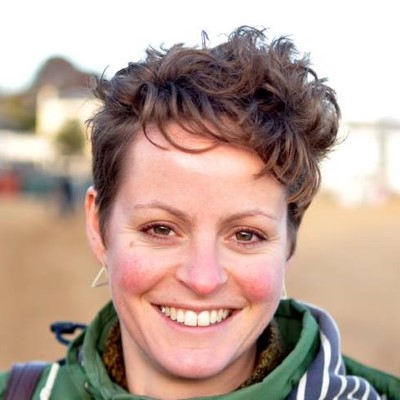You will have seen in the news that the team at the Jenner Institute, part of Oxford University, has begun human trials on a vaccine for COVID-19. And while the scientists have a high degree of confidence in their work, and a proven track record of success, it may still be many months until a vaccine is widely available. As Dr Elizabeth Webb explains, there is a careful process for the development of vaccines, to ensure they make us immune, and are safe.
How does immunity work?
When a germ, such as a virus or bacteria, enters our body, our immune system detects the germ's presence, fights it, and produces antibodies that recognise it and remember it. The antibodies we produce are specific to antigens on the surface of the germ: as different germs have different antigens, they all need different antibodies.
As long as our immune system recognises and remembers the germ, we have a level of immunity to the disease it causes. If the same germ gets into our body again, the immune system recognises it and antibodies disable the germ. In this way, the virus is killed before the infection gets a chance to take hold, and before we start to feel unwell.
Do we become immune to coronavirus?
Coronavirus (COVID-19) is a very new disease, and there are many things we don’t yet know, one of the most important being whether having already had coronavirus leaves people immune to getting it again.
Whether we become immune to a disease when we’ve had it depends on our immune system having a memory of the germ’s antigens as well as other factors, such as how fast the coronavirus mutates, and how long-lasting the immune system’s memory of coronavirus infection is.
Early evidence suggests the coronavirus isn’t mutating very fast. There have been some small changes in the genetic code of the virus since it first emerged late last year, but these are not significant enough to affect our immune system’s ability to recognise the virus.
How long our immune system will remember the coronavirus remains uncertain. The human immune system is complex, so it’s hard to predict. We will need to wait much longer to get good scientific evidence on this.
Whether or not having had coronavirus leaves us naturally immune to it, there is potentially a way of becoming artificially immune – through a vaccine.
How do vaccines work?
There are many types of vaccine, but the purpose of a vaccine is always the same: to immunise us so our immune system responds to a germ as if it remembers it. Vaccines contain the germs’ antigens, which prompt our immune system to make the antibodies to recognise and remember the germ. If we are actually exposed to the germ, our immune system is ready to fight it, and infection doesn’t get a chance to take hold. We are therefore immune to the disease, with the vaccination simulating the natural immunity we can get from having had a disease.
There are many different types of vaccines but all include a component that ‘mimics’ the germ that causes the disease they are intended to immunise us against. Some vaccines include the germ itself, in an inactivated (killed) or attenuated (weakened) form that can’t cause disease. Others include a part of the germ, or are based on the germ’s genetic material.
How are vaccines developed?
There is a careful process for developing vaccines, to ensure they make us immune, and are safe. In the initial exploratory stage, scientists identify antigens specific to the germ that causes the disease. Next comes the pre-clinical stage, during which there are initial tests of whether the vaccine will lead to immunity, and whether it is likely to be safe. These tests can take place ‘in vitro’ (in a group of cells which have been grown in a laboratory and are not part of an animal) or ‘in vivo’ (in animals).
Next comes clinical development, which includes 3 stages of trials during which the vaccine is tested on increasing numbers of people. These trials inform scientists as to whether the vaccine is safe, what side effects it has, and whether the vaccine will lead to immunity. Following these stages, the vaccine must then be licensed. In the UK the Medicines and Healthcare products Regulatory Agency (MHRA) examine all the information about the vaccine, how well it works and how safe it is, before giving approval. Once a vaccine has been licensed it must then be manufactured in large enough quantities for the population’s needs, before finally it can be given to people in the community.
Hope for the future
We have all heard that a vaccine for coronavirus could be ready in 18 months, while the work being done at Oxford University might mean this happens sooner. The amount of time it takes to develop a vaccine varies enormously, mainly because a vaccine can fail at any of the stages of development. The current record for the fastest development of a vaccine is 5 years for Ebola. However, there are many groups of scientists across the world racing to find a vaccine for coronavirus, with at least 78 potential vaccines already under development.
To get a coronavirus vaccine to be developed as quickly as possible, there may need to be some shortcuts, such as skipping the usual pre-clinical stage of seeing how well the vaccine works in animals before testing it on humans, partly for speed, but also because coronavirus is so new that we don’t know which animals it’s useful to test on. As manufacturing vaccines can take a long time, another pharmaceutical company has taken the gamble of starting to produce their vaccine before they even know if it works well.
Of course, the clinical development stages, when the vaccine is tested on people, can’t be skipped. But with at least 5 potential vaccines in clinical development, and the University of Oxford already testing theirs on more than 800 people recruited for the study, the signs are positive.
 No one should be left behind
No one should be left behind
As lockdown lifts, you can help us make sure vulnerable older people aren't forgotten. Donate today to help Age UK open doors for our older generation.

More articles by Dr Webb
Dr Elizabeth Webb is a Senior Research Manager at Age UK. She has an MSc in Epidemiology from the London School of Hygiene and Tropical Medicine and a PhD in Social Epidemiology from University College London.
- What's the science behind the Government's guidelines?
- Can we predict how coronavirus will progress?
- Why are older people more at risk from coronavirus?
- How can we recognise when we have coronavirus?
- What is R?
- How do we keep R below 1?
- What's the updated picture of coronavirus and older people?
- How can you assess your own risk from coronavirus?
- Is there an increased risk of coronavirus for BAME older people?
- What is k and who are the super-spreaders?

